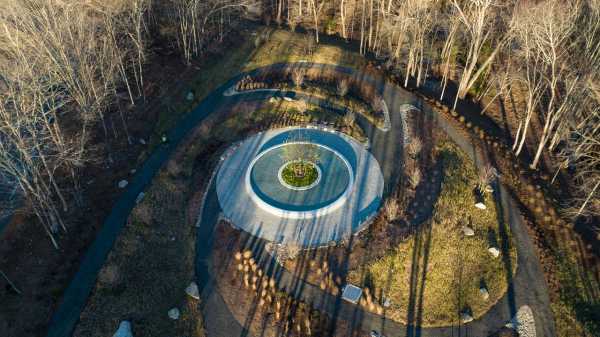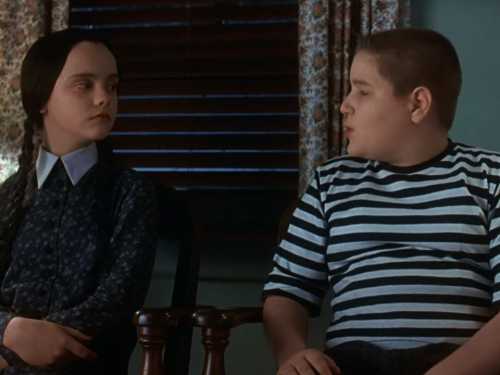
On the morning of December 14, 2012, a twenty-year-old man shot and killed his mother in the house they shared in Newtown, Connecticut. He used one of the at least five guns and four of the at least sixteen hundred rounds of ammunition in their household. Then he drove to Sandy Hook Elementary School, which he had attended as a child. With a Bushmaster XM15-E2S rifle, he shot dead six educators and twenty students between the ages of six and seven. With a Glock 20 10-millimetre semi-automatic handgun, he killed himself. These weapons are well-crafted objects; the morning was a terrible triumph of design.
In 2013, Newtown formed a volunteer commission of a dozen local residents to discuss if, and how, they could design a memorial to the Sandy Hook victims. Over the following year, they engaged in discussions with townspeople and bereaved family members; as the Connecticut Post reported, parents of the dead children requested gardens and solemnity and serenity. (Meanwhile, the town razed the school building and worked with the architecture firm Svigals + Partners to build a new one, also called Sandy Hook.) In 2014, the commission began looking for grounds for the project, eventually settling on a five-acre plot donated by the Boys Social and Athletic Club of Sandy Hook. Perhaps wary of outside influence, the community moved to fund the memorial entirely themselves. An open call solicited nearly two hundred proposals. In 2018, the commission chose a submission from a pair of landscape architects: Dan Affleck, a painter who grew up not far from Newtown, and Ben Waldo, a musician and the husband of a schoolteacher. Both were based in San Francisco and worked for the global design firm SWA, but they had submitted their proposal, hatched during coffee breaks, on their own. When they were chosen as finalists, the full SWA agency joined the effort, as did water-feature engineers from Fluidity Design Consultants, based in Los Angeles. The group brought in Connecticut subcontractors, including the Sandy Hook-based Artemis Landscape Architects, all experts in the local terrain.
On a chilly November morning, I had plans to meet Affleck and Waldo, Artemis’s Tara Vincenta, and some local officials at the memorial, which covers about three and a half acres not far from the new school, with members of the press. As I walked down a short gravel path, I heard birds and distant announcements over an intercom. A discreet camera tower stood among some trees, and, in the distance, an American flag hugged its pole. I arrived at a granite marker, roughly a rhombus. Upon it, a COR-TEN steel plaque offers words from President Barack Obama: “all across this land of ours, we have wept with you.” Within it, a COR-TEN box entombs the incinerated remains of thousands of rain-battered Teddy bears, flowers, and cards—part of the deluge of offerings sent to the townspeople following the massacre, that formed early impermanent memorials. Beyond it, another path descends, beckoning downward, past a fieldstone that was unearthed during construction and is now a place to rest.
Suddenly, the project reveals itself: a gentle arc of gravel, loping around the perimeter of the site and wrung with native plantings, including dogwoods, maples, black-eyed Susans, and clump grasses determined to survive the winter. Circular paths offer various routes toward the memorial’s center. Along the outermost corridor, I pass a few medians of smooth stones, a soft mound of earth about my own height, butterfly bushes and joe-pye weed and shrubs of Winter Gold winterberries. At the center of the interlocking paths, a stepped ring of granite is topped by a bevelled lip, segmented and marked, one by one, with the names of the dead. A pool of water laps softly at these echoes of headstones, floored with black aggregate, like tiny shadows. A London plane tree, not yet in adolescence, roots into a central island, lifting toward the clear blue sky.
Our little group assembled. The area, Waldo told us, “was sort of a decommissioned Little League baseball field, overgrown with weeds and invasives.” Nearby, Alan Martin, the vice-chairman of the Sandy Hook Permanent Memorial Commission, nodded from under a baseball cap. During the site-selection process, Martin had come to the site with two other committee members and heard, from the rebuilt school nearby, the sound of children playing. They convinced the others that this must be the place. And everyone called it the Clearing. “It already was a clearing,” Waldo said. “You’ll notice that the trees around this space, this existing forest, kind of lean into the clearing. It’s grown into the space as though it were already open. You’d be able to tell if we just clear-cut a bunch of trees. Instead, it feels like they’re reaching in and embracing the space.”
The memorial’s spatial poetics—the balance between circular pathways and blocks of granite, its enduring engravings of names in stone and perennials for texture and color through the seasons—ground its intent. Every monument evidences an event, but this one has a more complicated task. Ghoulish opportunists like the Infowars host Alex Jones have made industries out of claims that the Sandy Hook murders were a false-flag operation intended to build support for gun-control measures. Families who were mourning their children also had to prove their children ever existed. The natural world throws light onto the unnatural; life and death is the soul of landscape architecture, and Affleck and Waldo have deftly embodied life cycles in their circles. There’s no arguing here. The plane tree, placed in the full spotlight of the sun, has kept its green leaves longer than expected, but they will fall and others will grow. If you don’t believe in a tree, you believe in nothing. The Sandy Hook Permanent Memorial settles things, its very name the final word on the matter.
A few days prior, some hundred or so family and community members had inaugurated the space with a private ceremony, floating candles in the water and laying flowers on the names. Despite the autumn wind today, a few gold carnations still held fast. The architects and commission members have sought to dampen attention to the memorial by keeping signage minimal. Parking spots are few. So far, Waldo and Affleck tell me, protesters have left the Clearing alone. Sandy Hook parents recently won court cases against Jones and and have settled with Remington, the former manufacturer of the Bushmaster family of consumer products. But Republicans and their accomplices are stocking court chambers with fresh ammunition for those who look to guns for answers. A recent Supreme Court decision has placed gun-control laws nationwide in constitutional jeopardy, making more mass shootings inevitable. This is a world that is designed for the locked and loaded, and it’s a hard world to remain in.
I stared at the water: the current flowed counterclockwise, an intentional counterbalance to the clockwise path that the cobblestones encourage. I circled the memorial to view each name, trying to stay in the moment. But, instead, I went backward: to college, when a classmate of mine shot dead a student and a teacher the night before first-year final exams. I remembered their names and those of the four others that he wounded. I thought about the active-shooter drills that my friends’ children and my teacher friends now endure, preparing for—performing—the moment that someone tries to gun them down. Ten years after the Sandy Hook shootings, everyday life can feel like target practice. It is only fitting that a visitor to the Sandy Hook memorial walks in circles; we are all trapped in a loop of carnage, campaign donations, thoughts and prayers. The trees here will outgrow the children they honor. ♦
Sourse: newyorker.com






